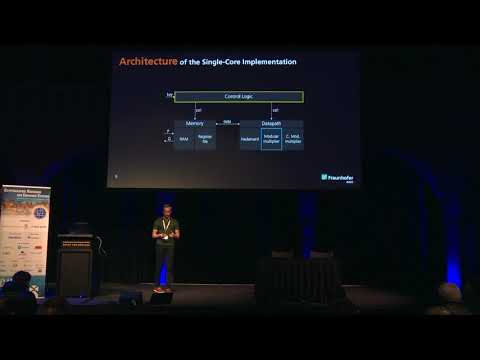CryptoDB
Fast FPGA Implementations of Diffie-Hellman on the Kummer Surface of a Genus-2 Curve
| Authors: |
|
|---|---|
| Download: | |
| Abstract: | We present the first hardware implementations of Diffie-Hellman key exchange based on the Kummer surface of Gaudry and Schost’s genus-2 curve targeting a 128-bit security level. We describe a single-core architecture for lowlatency applications and a multi-core architecture for high-throughput applications. Synthesized on a Xilinx Zynq-7020 FPGA, our architectures perform a key exchange with lower latency and higher throughput than any other reported implementation using prime-field elliptic curves at the same security level. Our single-core architecture performs a scalar multiplication with a latency of 82 microseconds while our multicore architecture achieves a throughput of 91,226 scalar multiplications per second. When compared to similar implementations of Microsoft’s Fourℚ on the same FPGA, this translates to an improvement of 48% in latency and 40% in throughput for the single-core and multi-core architecture, respectively. Both our designs exhibit constant-time execution to thwart timing attacks, use the Montgomery ladder for improved resistance against SPA, and support a countermeasure against fault attacks. |
Video from TCHES 2018
BibTeX
@article{tches-2018-28957,
title={Fast FPGA Implementations of Diffie-Hellman on the Kummer Surface of a Genus-2 Curve},
journal={Transactions on Cryptographic Hardware and Embedded Systems},
publisher={Ruhr-Universität Bochum},
volume={2018, Issue 1},
pages={1-17},
url={https://tches.iacr.org/index.php/TCHES/article/view/830},
doi={10.13154/tches.v2018.i1.1-17},
author={Philipp Koppermann and Fabrizio De Santis and Johann Heyszl and Georg Sigl},
year=2018
}

